#Guru Rinpoche
Text
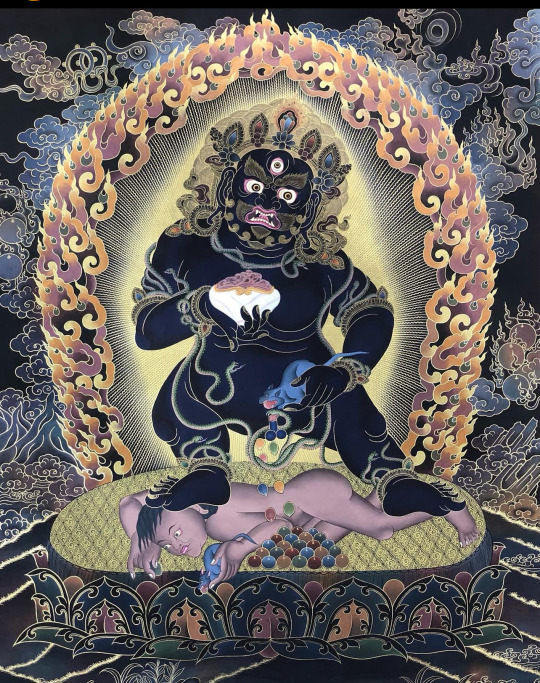
Zambhala has a type of enlightened energy that purifies misery Karma. Zambhala helps one to collect the merit in order to achieve that and purify the demerit that stops you from achieving that.
If one practice Zambhala practice correctly one become less miserly, less greedy, less selfish.
#buddha#buddhist#buddhism#dharma#sangha#mahayana#zen#milarepa#tibetan buddhism#thich nhat hanh#dakini#dzogchen#amitabha#four noble truths#Padmasambhava#Guru Rinpoche#manjushri#Dzambala
27 notes
·
View notes
Text
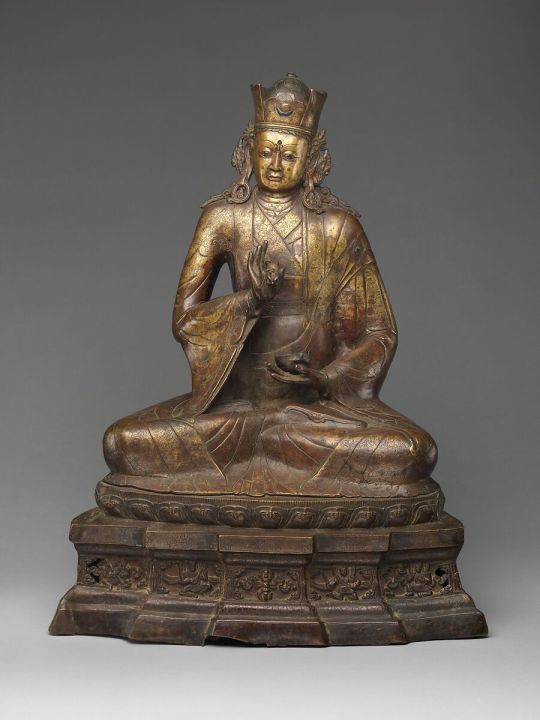
The Spiritual Master Padmasambhava
Western Tibet or Ladakh, 14th century
This portrait of Guru Padmasambhava (Lotus-Born) is one of the earliest known effigies of the eighth-century Indian mystic, revered as the leading propagator of tantric Buddhism in Tibet. He is believed to have gone to Tibet at the invitation of King Trisong Detsen and there founded the Nyingma Order of Tibetan Buddhism. Popularly known as Guru Rinpoche, here he sits enthroned in a yogic posture and holds a thunderbolt scepter (vajra), symbolizing the clarity of pure Buddhist thought, and a skull cup (kapala), representing detachment. He wears the distinctive cloth cap of his order and has distended earlobes, the mark of an enlightened being. His facial expression is accessible, attentive, and spiritually alive. [...].
9 notes
·
View notes
Text
David Bowie employed his artistic endeavours as a means to delve into the depths of his profound interests, among which was his enduring fascination with Buddhism and broader Eastern philosophy. His exploration of these themes became a distinctive thread woven into the rich tapestry of his creative expression.
Bowie was introduced to the power of Buddhism and other Eastern philosophies by his older half-brother, Terry Burns, who had a tremendous impact on how his life and career would turn out. Burns also opened Bowie’s mind up to total creativity with the works of Beat Generation writers such as William S. Burroughs, modern jazz, and even the occult. Many of what would become his artistic hallmarks can be traced back to these formative influences.
In the early years, when Bowie was still trying to find his feet as an artist, his fascination with Buddhism made its way into his work. The first song to contain his interest in religion is ‘Silly Boy Blue’ from 1967’s self-titled debut album. Years later, Bowie would claim that he wrote the song ‘Karma Man’ about the ongoing strife between Tibet, the home of the Dalai Lama, the leader of ‘Yellow Hat’ Tibetan Buddhism, and China, who annexed it in 1951.
Bowie developed his interest in Tibetan Buddhism in 1965. In addition to what his brother showed him, this materialised after reading Nazi SS Sergeant Heinrich Harrer’s 1952 memoir Seven Years in Tibet. It retold his experiences in the country between 1944 and the Chinese annexation.
Speaking to Melody Maker in 1966, Bowie outlined his love for Tibet, stating: “I want to go to Tibet. It’s a fascinating place, y’know. I’d like to take a holiday and have a look inside the monasteries. The Tibetan monks, Lamas, bury themselves inside mountains for weeks and only eat every three days. They’re ridiculous – and it’s said they live for centuries.”
Although Eastern philosophy and Buddhism greatly influenced the counterculture of the 1960s, Bowie was serious in his dedication to the faith, and it would remain for decades after the zeitgeist changed. In 1966, he visited the North London Buddhist Centre, Tibet House, and spoke to one of its teachers, Chime Yong Dong Rinpoche, with whom he would become lifelong friends.
Introducing ‘Silly Boy Blue’ at the Tibet House Benefit in 2001, Bowie explained: “I stumbled into the Buddhist Society in London when I was about seventeen. Sitting in front of me at the desk was a Tibetan lama, and he looked up and he said, ‘Are you looking for me?’ He had a bad grasp of English and, in fact, was saying, ‘Who are you looking for?’ But I needed him to say, ‘You’re looking for me.’ It’s absolutely true!”
Bowie recalled: “So he became my friend and teacher for quite some time. His name is Chime Yong Dong Rinpoche and he now is head of [he was Curator of Ancient Tibetan Manuscripts] at the British Museum in London. This was ’65, ’66. That’s when I met him. Around that time, I wrote this next song… ‘Silly Boy Blue’.”
Bowie also introduced Rinpoche to his friend Tony Visconti, who also became his student. Looking back on their significant first meeting, Lama Chime Tulku Rinpoche told The Telegraph in 2016: “I said, ‘Come in, young man. Why did you come to see me?’ He said, ‘I want to become a monk.’ I asked him, ‘What is your talent?’ And he said music. I said, so then don’t become monk; you do the music. And from that day, that is what he did."
youtube
#david bowie#silly boy blue#buddhism#eastern philosophy#karma man#1950s#50s#1960s#60s#tibet#tibetan buddhism#dalai lama#china#seven years in tibet#heinrich harrer#tony visconti#guru rinpoche#rinpoche#chime yong dong rinpoche#buddhist#Youtube
7 notes
·
View notes
Text
Namaste, Today is the 21st of February 2024. Today in the Tibetan Buddhist Calendar is Guru Rinpoche Day. Thank you, Guru Rinpoche. Thank you, Lama Yeshe Losal Rinpoche. Thank you, my father.
དགེ་རྒན་ཆེ་མོ་བ་རིན་པོ་ཆེ་ལ་ཐུགས་རྗེ་ཆེ་ཞུ་རྒྱུ་ཡིན། བཀའ་དྲིན་ཆེ་ཞུ་བ་སྐུ་དྲིན་ཆེ་ཞུ་ བཀའ་དྲིན་ཆེ། ངའི་ཨ་ཕ།
#Lamayeshelosalrinpoche is busy building a new and eco-friendly Tibetan Buddhist temple called Kagyu Samye Dzong in Johannesburg, South Africa. It is called the Rupa Project, in memory of his brother Tulku Akong Rinpoche.
Give what you can as you are. Whether it's a pretty leaf, a smile, or a hug.
To contribute or volunteer, use this email address provided provided. 🙏🏼 [email protected]

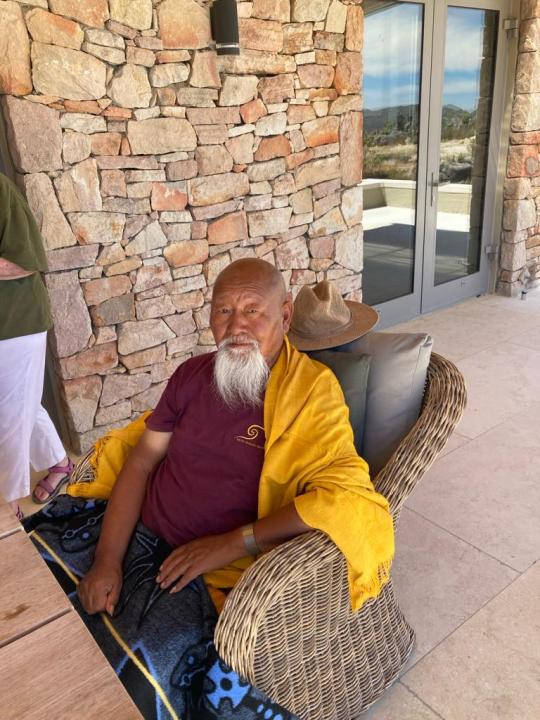


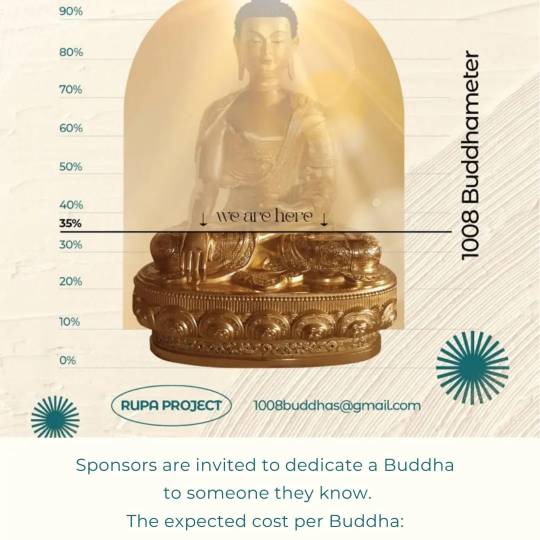


#tibetan buddhism#buddhism#liberation#humility#guru rinpoche#karma#karmpa#dalai lama#lamayeshelosalrinpoche#thank you#laugh through the pain#karmakagyulineage#spiritual vibrations#resonance#global peace#globalhealth#free tibet#free palestine#contradiction#tulkun#tulkuakongrinpoche#desmond tutu
5 notes
·
View notes
Photo
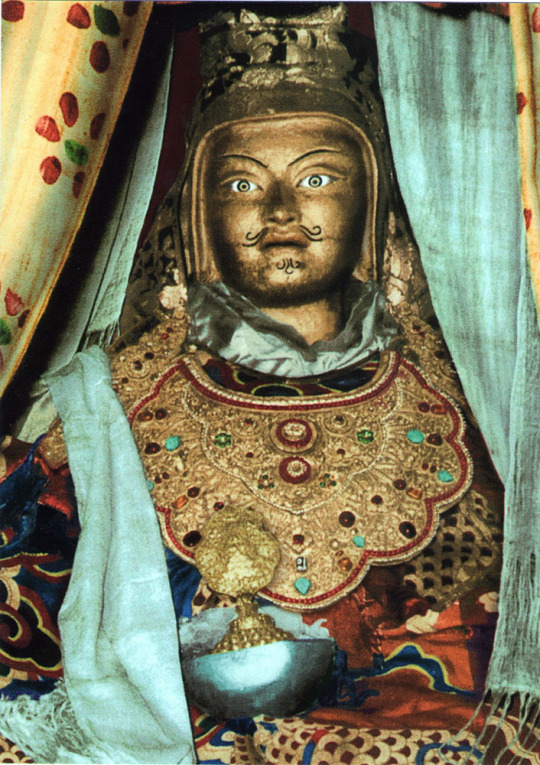
Padmasambhava
Legendary 8th century Indian Buddhist mystic who introduced Tantric Buddhism to Tibet and who is credited with establishing the first Buddhist monastery there.
The statue in the picture is said to have been made from life and blessed by him in 8th century Tibet. The original black-and-white photograph was taken by the Queen Mother of Sikkim Gyalyum Kunzang Dechen Tsomo Namgyal. It was later computer enhanced according to the advice of lamas who had seen the original, which was sadly destroyed during the Cultural Revolution which lasted from 1966 to 1976.
124 notes
·
View notes
Text

Kay Konrad (German, b. 1952), Guru Dragpur
"Scintillating wrathful form of Guru Rinpoche that in a flash makes all obstacle makers and hindrances turn on their heels and disperse!
May it be so for all who see, all who receive."
www.dakiniasart.org
28 notes
·
View notes
Text
Yo I made Buddhism and Hinduism altar today in minecraft, quite messy cuz I have 0 sense of decoration or whatsover but also 0 intention to disrespect any gods or religious figure

Might made some more variations of the altar, maybe specific to one god or in different categories (see the name of deities in tags!)
#buddha#gautama buddha#padmasambhava#guru rinpoche#tibetan buddhism#vajrayana#mahayana#theravada#buddhism#lord ganesh#lakshmi#rama#sita#ramayana#hinduism#hindu gods#hindu mythology#minecraft#altar setup#gaming
7 notes
·
View notes
Text

[Digital Altar]
Guru Padmasambhava
༺༒༻
{The Glorious Lotus-Born}
༂HŪM! In the heart of a Lotus Flower
Endowed with the most marvelous attainments
Renowned as the Lotus-Born
Surrounded by hosts of Dakinis
Following in your footsteps I pray:
Through the positivity & merit of this
May I swiftly accomplish the realization of the Master Lotus-Born
May I bring each & every single living being to that perfect state as well! HŪM!༂
╔╦══• •✠•❀•✠ • •══╦╗
¡Gather the accomplishments of the Lotus Master!
🌺🌺🌺🌺🌺🌺🌺🌺
#power spot#digital grimoire#digital altar#tibetan#guru Rinpoche#buddha#Padmasambhava#blessings#merit#lotusborn#lotus flower#techno sorcery#cyber scrapbooking#7 line prayer#incantation#potala#temple#vajra
12 notes
·
View notes
Photo
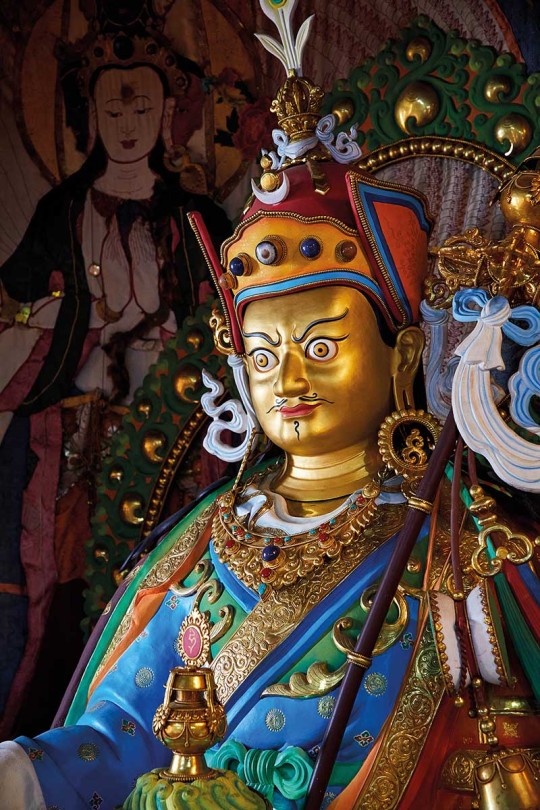
Guru Rinpoche (Padmasambhava), a popular Buddhist saint often depicted in temples
Living in Everest’s shadow: the Sherpa people of Khumbu
Photographs by Stuart Butler

Young monks study religious scriptures at a monastery near the remote village of Thame

For Tsheten Dorje Sherpa preserving Sherpa culture is of utmost importance
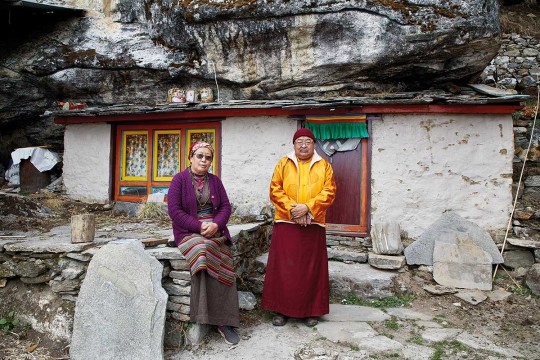
Lakpa Dolma Sherpa and her husband outside the Ginepa Monastery
#stuart butler#photographer#mount everest#sherpa people of khumba#guru rinpoche#padmasambhava#buddhist saint#thame#nepal#culture#travel
13 notes
·
View notes
Text
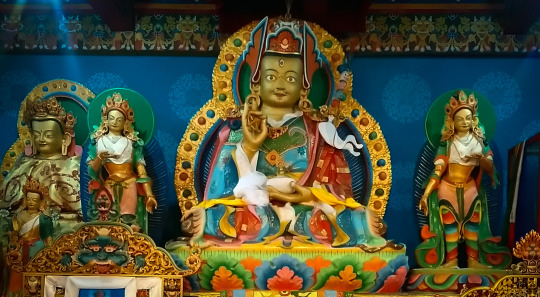
3 notes
·
View notes
Photo
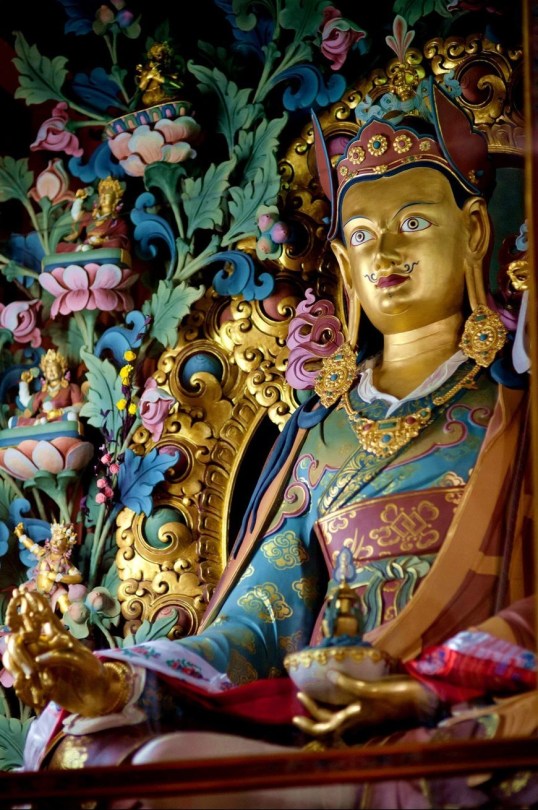
“The master replied: Tsogyal, the empty essence of your awareness is not created by anyone. Without causes and conditions, it is originally present. Don't try to change or alter awareness. Let it remain exactly as it is! Thus you will be free from straying and awaken within the state of primordial purity.”
― Padmasambhava, Advice from the Lotus-Born: A Collection of Padmasambhava's Advice to the Dakini Yeshe Tsogyal and Other Close Disciples
4 notes
·
View notes
Text

Stoicism and Buddhism: A Comparative Analysis
Attraction to those close to you catches you in its currents; Aversion to those who oppose you burns inside; Indifference that ignores what needs to be done is a black hole. Leave your homeland — this is the practice of a Bodhisattva.
Cato hated excess. He hated finery. He hated luxury. He thought to indulge such things was weakness and stupidity. And so what did Cato think of his brother who was far less strict about these things? He loved him. In fact, he worshiped him.
It’s important to remember: The Stoic has strict standards. We have strong opinions on what’s right and what isn’t. But…and this is a big but…we have to be understanding and forgiving of those who have been, as Marcus Aurelius writes, cut off from truth.
Stoicism and Buddhism are two ancient philosophical nd spiritual traditions that have captivated the minds of countless individuals over centuries. While they have distinct cultural origins and historical backgrounds, a closer examination reveals intriguing similarities and differences in their core principles and approaches to life. In this essay, we will explore these two philosophies and shed light on their fundamental ideas, ultimately highlighting the common ground and disparities that define them.
**Stoicism:**
Stoicism, originating in ancient Greece, is a philosophy founded by Zeno of Citium around 300 BCE. It places a significant emphasis on rationality and virtue as the means to attain a tranquil and content life. Several fundamental tenets characterize Stoicism:
1. **Virtue as the Highest Good:** Stoics believe that the highest good is living in accordance with virtue. The four cardinal virtues of wisdom, courage, justice, and temperance are essential in guiding human actions.
2. **Acceptance of What Is Beyond Control:** A core Stoic teaching is the acceptance of things that are beyond one's control. Stoics argue that inner peace is achieved by recognizing and accepting that external events are beyond one's power, while one can control their own thoughts and actions.
3. **Emotional Resilience:** Stoics advocate for emotional resilience through reason and self-discipline. They view destructive emotions, such as anger and fear, as hindrances to a tranquil life and emphasize the importance of maintaining emotional equilibrium.
4. **Detachment from Material Possessions:** Stoicism encourages individuals to detach themselves from material possessions and not be attached to external outcomes or circumstances.
5. **Compassion and Justice:** While Stoics maintain strict standards and opinions about what is right, they also promote the development of a rational and compassionate attitude towards others, placing a strong emphasis on justice and fairness.
**Buddhism:**
Buddhism, founded by Siddhartha Gautama, the Buddha, in ancient India, is both a spiritual and moral philosophy that aims to address the problem of suffering and guide individuals toward enlightenment and liberation from suffering. Buddhism's key principles include:
1. **The Four Noble Truths:** Central to Buddhism is the recognition of suffering as an inherent aspect of human existence. The Four Noble Truths acknowledge the existence of suffering, identify its cause as attachment and desire, propose the possibility of cessation, and outline the Eightfold Path as the means to achieve liberation from suffering.
2. **Detachment from Desires:** Buddhism places a strong emphasis on detachment from desires and attachments as the primary source of suffering. By letting go of attachment to material possessions and craving, individuals can attain a state of equanimity.
3. **Mindfulness and Meditation:** Buddhism teaches the practice of mindfulness and meditation as essential tools for gaining insight into one's own mind and emotions. These practices help individuals transcend attachment to emotions and desires.
4. **Compassion and Loving-Kindness:** Buddhism promotes compassion (karuna) and loving-kindness (metta) as crucial virtues, encouraging the alleviation of suffering not only in oneself but also in all sentient beings.
5. **Karma and Rebirth:** Buddhism emphasizes the concept of karma, which suggests that one's actions have consequences. While Stoicism focuses on the present moment, Buddhism is concerned with the accumulation of good or bad karma, leading to different states of existence in the cycle of birth and death (samsara).
**Comparative Analysis:**
Both Stoicism and Buddhism share some fundamental principles despite their differing cultural origins. Notable points of comparison include:
1. **Emotional Control:** Both philosophies advocate for control over one's emotions. Stoics aim for emotional resilience through reason and self-discipline, while Buddhism teaches mindfulness and meditation to gain insight into and transcend emotions.
2. **Detachment:** Both philosophies emphasize detachment, whether from material possessions (Stoicism) or desires and attachments (Buddhism) as a means to find inner peace.
3. **Compassion:** While Stoics emphasize rational and compassionate attitudes toward others, Buddhism places significant importance on compassion and loving-kindness as virtues to alleviate suffering.
4. **Acceptance:** Stoicism teaches the acceptance of things beyond one's control, whereas Buddhism extends this idea to include the acceptance of the impermanence of all things.
However, they also differ in key ways:
1. **Virtue vs. Enlightenment:** Stoicism centers on the pursuit of virtue and living in accordance with it, while Buddhism is primarily concerned with attaining enlightenment and liberation from the cycle of suffering.
2. **Karma and Rebirth:** Buddhism incorporates the concepts of karma and rebirth, which Stoicism does not address.
3. **The Role of Desire:** Stoicism acknowledges the importance of controlling desires, while Buddhism posits that desires are the root cause of suffering.
**Conclusion:**
In conclusion, Stoicism and Buddhism are two profound philosophical and spiritual traditions that offer valuable insights into human existence, the pursuit of inner peace, and the cultivation of virtues. While they have distinct philosophical and cultural backgrounds, their shared emphasis on emotional control, detachment, and compassion reveals common threads in their teachings. By understanding and appreciating the principles of both Stoicism and Buddhism, individuals can draw upon a broader range of wisdom to navigate the complexities of life, seeking personal growth, self-awareness, and a path toward a more fulfilling and meaningful existence. These philosophies continue to inspire and guide individuals in their quest for a balanced and harmonious life.
#buddha#buddhism#buddhist#dharma#sangha#mahayana#zen#milarepa#tibetan buddhism#thich nhat hanh#stoicism#maha siddha saraha#marcus aurelius#seneca#padmasambhava#inner peace#Guru Rinpoche#Bodhisattva#buddha samantabhadra#Longchenpa#dalai láma#dhamma#dzogchen#four noble truths#green tara#tantra
56 notes
·
View notes
Text
I think a critical point about Buddhism is that your practice must surpass your study. This criticism is one that I have of the Gelug school in particular, because they place more emphasis on an intellectual understanding of enlightenment rather than a practical understanding of it.
There has never been a more valuable teacher in my life than direct experience. You can intellectualize things all you want, but once the rubber hits the road, the knowledge that you thought you had won’t always help you. You may have to improvise, and you may even find that your experience doesn’t exactly match what you’ve learned. (Of course, personal experience isn’t everything when you have a teacher guiding you, but Buddhism is an experience-based religion.)
Guru Rinpoche said “If he practices, then even a cowherd can realize liberation.
Even though he does not know the explanation, he can systematically establish himself in the experience of it.” HE REALLY MEANT THAT. The most important part of mindfulness, dzogchen, and mahamudra is maintaining a mind that is spacious and without conceptions. You should try to maintain a mind that allows experience to flow without the impediments of your internal thought constructions, and believe me, there are lots of them. I don’t think I’ve learned how to do it perfectly yet, and that’s why I’m not a monk or a rinpoche.
My problem, though, comes from my interest in the intellectual side of Buddhism. I think about philosophy literally all the time, even during practice, and that’s a huge problem. You have to remember that the teachings are just teachings, and that when it’s time to practice, it’s time to stop thinking and start doing. I find that I keep trying to remember teachings to be sure that I’m doing the practice right, which leads to a certain level of frustration.
Just let go. If you have truly absorbed the teachings, then there will be no need to remember them during practice. As the Nike ads always say, “Just do it.” If you can attain that, then your practice will take you places, and the intellectual understanding will come afterwards. Shakyamuni Buddha didn’t philosophize to attain enlightenment--He just sat under the bodhi tree in meditation without elaboration. This method is the ultimate skillful means for liberation.
3 notes
·
View notes
Text
Gain certainty in the fact that since the very beginning your own mind is the awakened state of buddhahood. Gain certainty in the fact that all phenomena are the magical display of your mind. Gain certainty in the fact that the fruition is present in yourself and is not to be sought elsewhere. Gain certainty in the fact that your master is the buddha in person. Gain certainty in the fact that the nature of view and meditation is the realization of the buddhas. To gain such confidence you must practice!
– Guru Padmasambhava
0 notes
Text
Padmasambhava Day Tsok
We would like to announce Padmasambhava Day tsok is coming up Thursday April 18th at 6:30pm. Zoom id 509 039 5309. If you wish to offer tsok and serkyem please prepare your shrine ahead of time thank you.Admin

View On WordPress
1 note
·
View note